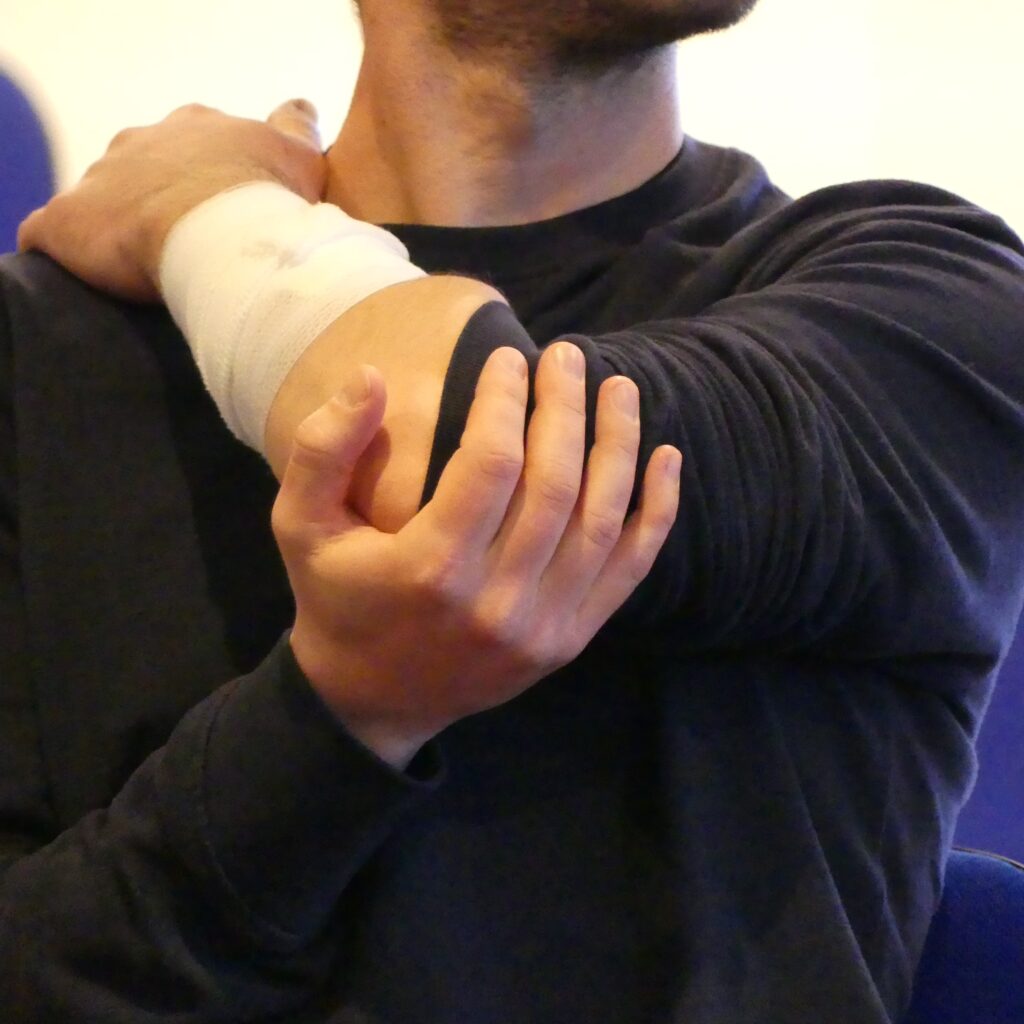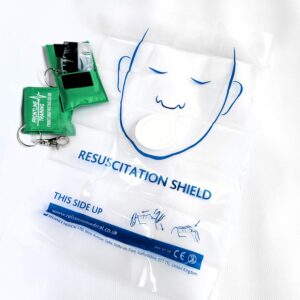Bleeding
When someone is bleeding severely, it can be distressing and scary.
Acting quickly and getting the bleeding under control is the most important thing to do.
Learn about the actions to take if someone is bleeding severely 👇

Emergency Advice ⚠️
If someone is bleeding severely:
- Apply direct pressure to the wound (Press around anything embedded)
- Call 999 or 112 and send for a first aid kit
- Treat the casualty for shock
- Secure the wound with a dressing to maintain pressure
Actions to take

Gloves on
Due to the risk of infection from open wounds and blood, wear protective gloves if possible to prevent cross infection

Apply Pressure
Apply direct pressure to the wound using a sterile dressing or clean cloth to stop the bleeding
- if you don’t have anything you can get the casualty to apply pressure themselves
- Expose the wound by removing or cutting clothing to uncover it
- if there is an embedded object, DO NOT pull it out, it could be acting like a ‘plug’. Instead apply pressure on either side, pushing the edges together

Call 999
Call 999 or 112 for an ambulance, inform them of the location of the wound and the extent of the bleeding. Send for a first aid kit. You could ask a helper to do this.
- Use the hands free function on your phone if there is no one to help

Dress the wound
Secure your dressing in place with the bandage to maintain pressure on the wound. You do not want to cut off circulation but ensure there is enough pressure to control the bleeding

Ensure circulation
To ensure there is still circulation past the bandage, check the casualty’s circulation by pushing firmly onto their nail or skin for 5 seconds until it turns pale, then release the pressure, if colour returns then it suggests adequate circulation, if there is no colour return within 2 seconds the bandage is too tight and you may have to loosen it slightly or reapply the bandage.

Treat for Shock
Your casualty may develop shock from blood loss. Some common signs are them becoming pale, cold and clammy. Treat them for shock by laying them down and elevate and support their legs above their heart. Loosen tight clothing and anything restrictive and keep them warm with a blanket or coat

2nd Dressing?
If blood comes through the dressing, remove it and apply a fresh dressing. It may be that there was not enough pressure or the dressing was incorrectly placed over the wound. Once the bleeding is under control use the bandage to apply pressure and tie the knot over the wound to keep pressure on.

Support
Support the injured part with the use of a sling or triangular bandage and keep checking circulation past the dressing every 10 minutes.
Monitor
Continue monitoring levels of response until further medical help arrives. If the casualty becomes unresponsive, perform a primary survey and prepare to start CPR.
Tourniquet?
If you cannot control the bleed with direct pressure, the ambulance call handler will ask you to use a tourniquet or improvise a tourniquet if you do not have one or if you are not trained. They might ask you to use items like a belt, triangular bandage or neck tie and will instruct you on what to do.
Train with us
This subject is covered in detail on the following courses that we offer:
Be prepared for anything with our first aid supplies 👀
-
 Universal First Aid Kit£15.00
Universal First Aid Kit£15.00 -
 First Aid Kit – Refill£7.95
First Aid Kit – Refill£7.95 -
 CPR Face Shield Key Ring£3.50
CPR Face Shield Key Ring£3.50



